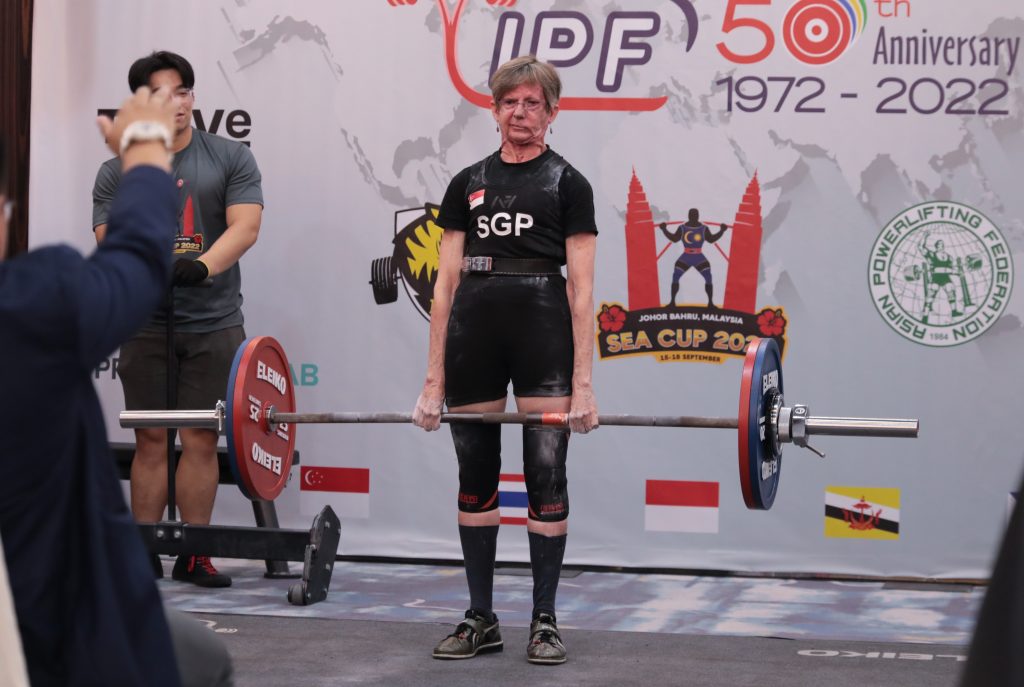
Is your grip failing on the deadlift? Do you feel your hands opening up while pulling? Does the bar slide down your fingers, threatening to escape your hands?
You’re not alone. It’s a very common issue as the weight on the bar of your deadlift increases.
And once your grip starts to go, it’s very distracting. You may find yourself unable to keep your back flat or not being able to lock out the lift. Unless you have a 30 cm handspan like strongman Mark Felix, your grip will be the first limiting factor as your deadlift weight goes up.
The problem of grip strength
While the deadlift trains pretty much all your muscles, the ones you use to grip aren’t as big and strong as the one that does all the heavy lifting (pun fully intended) in the deadlift, namely your hips, legs and back. As a result, your grip strength will very likely be the limiting factor as the weights used increases.
Grip strength comes from the force generated mostly by the muscles in your forearms. If this force is enough to create friction and “squeeze” between your hand and the bar, you can securely hold on to the load.
When you first start out, the double overhand grip is the grip everyone starts off with and will be sufficient to hold on to the bar.
There’s no learning curve, because it uses the most natural hand position. Both your hands are pronated (hands over the bar), with fingers around the bar and thumbs curling under and around the fingers.
The issue with this is that as the weight goes up, the barbell will have a tendency to rotate out of your hands. With a double overhand grip, there’s nothing much to stop this rotation except your hands grabbing onto it.
Use chalk
If you’re not already using chalk, start now.
In any proper lifting gym, the gym should provide or at least allow you bring your own chalk. If your gym doesn’t allow chalk, either start using liquid chalk stealthily and clean up after yourself or find a better gym like ours.
Chalk secures your grip by improving friction. Chalk keeps your hands dry and improves your contact with the barbell, so that it doesn’t slip out of your hands.
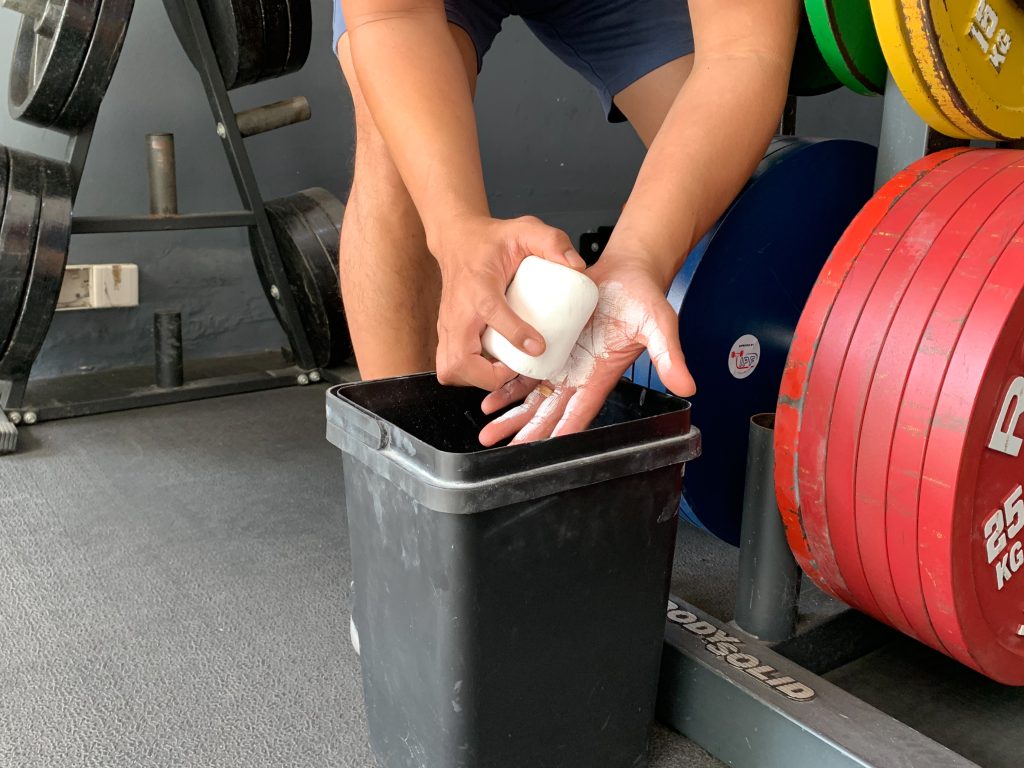
A double overhand grip with chalk should last you for the first couple of months of training. As soon as you start to feel like the bar is slipping out of your hands, changes to your grip need to be made.
A secure grip on the bar is the goal – you cannot lift what you cannot hold.
As a general rule, you should switch to a more secure grip the moment you feel your grip starting to go.
Here are the deadlift grips we recommend when it’s time to switch to a more secure grip on the bar, in order of our preference:
Hook grip
It looks like a double overhand grip, except that your thumb is between the bar and your fingers, and your middle and/or pointer finger(s) grips the thumb – that’s the “hook”.
This increases your grip security, because of the extra friction across the thumb. Like the double overhand grip, your shoulders are symmetrically loaded. One more advantage would be that the bar has less distance to travel to lockout because it’s set lower in your fingers
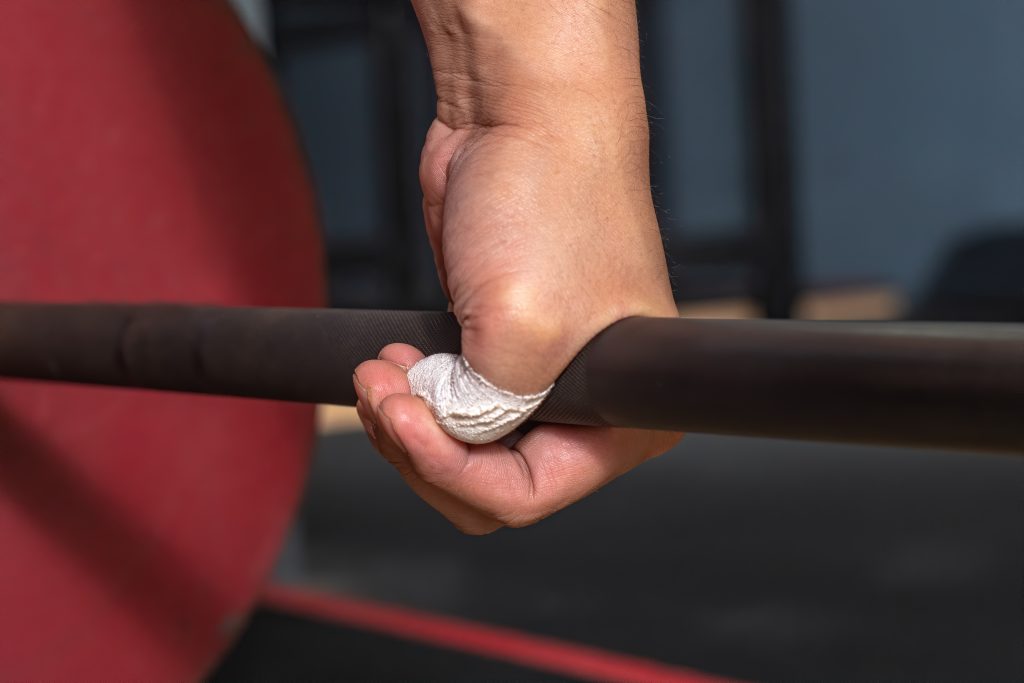
The hook grip’s main disadvantage is its discomfort. The feeling of your thumbs being smushed between the bar and your finger can get pretty uncomfortable and takes some getting used to.
Solution? Start early and gradually get used to it. My colleague, Marvin, introduces the hook grip to his clients way before they need it when the weights are still relatively light. A lighter bar means lower compressive forces on the thumbs = less discomfort. It’s easier to get accustomed to the hook grip when the weights are lighter and gradually work your way up.
Alternatively, thumb tape can be used to help with the pain discomfort.
Unfortunately, if you’ve got small hands and/or short digits, the hook grip may not work so well for you.
If you still really can’t tolerate the hook grip even after giving it a good run or you find your grip still failing, move on to the next grip.
Alternate or mixed grip
This is the first grip most people change to when their double overhand grip starts to go, probably due to seeing other lifters in videos or in the gym using it.
Generally speaking, you’ll feel more comfortable with your dominant hand over (pronated), and your non-dominant hand under (supinated).
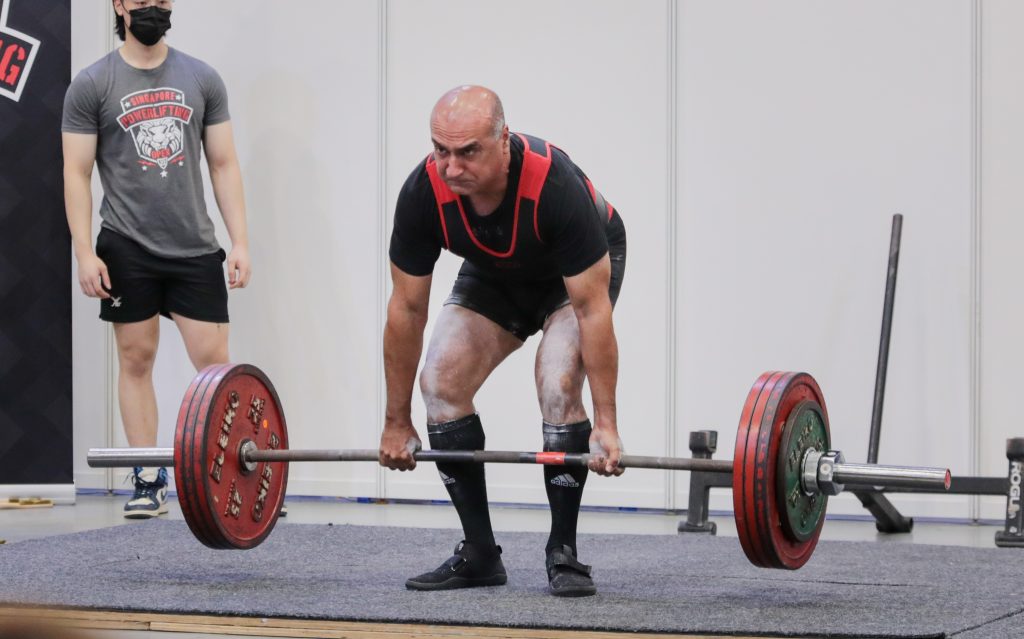
It’s more secure than the double overhand or hook, because the alternate placement of hands stops the rotation of the barbell. The tendency of the barbell to roll out of your pronated hand will be countered by its tendency to also roll into your supinated hand.
However, your shoulders are asymmetrically loaded. Your pronated arm is in internal rotation, while your supinated arm is in external rotation. Because of this, the bar will have a tendency to rotate away from the supinated hand during while pulling – this is known as windmilling or helicoptering and countering it while you’re pulling a heavy bar isn’t the easiest thing to do.
When we bring up using the alternate/mixed grip to clients, there are occasional concerns that the alternate grip may cause the distal attachment of the bicep tendon on the supinated arm to rupture. While there is a nonzero chance of that occurring, it is exceedingly rare – I’ve been coaching for 14 years and have been to a whole bunch of local, regional and international powerlifting meets. Not once have I seen it occur.
If you’re worried, keeping your arms fully extended when you set up and pull and not yanking the bar off the floor will help to further lower the chance of it occurring.
Bonus: there’s also the alternate/mixed hook grip, which essentially combines the alternate/mixed grip with the hook grip. It’s the most secure grip that I know of without adding any extra equipment.
Straps
If you’ve exhausted all the grips mentioned above and still can’t hold on to the bar on your heavy deadlifts, straps can be used if you have no desire to compete in powerlifting since straps are not allowed in powerlifting.
Straps do the holding onto the bar bit for you and take the load off your hands, by transferring the weight directly to your wrists and arms.
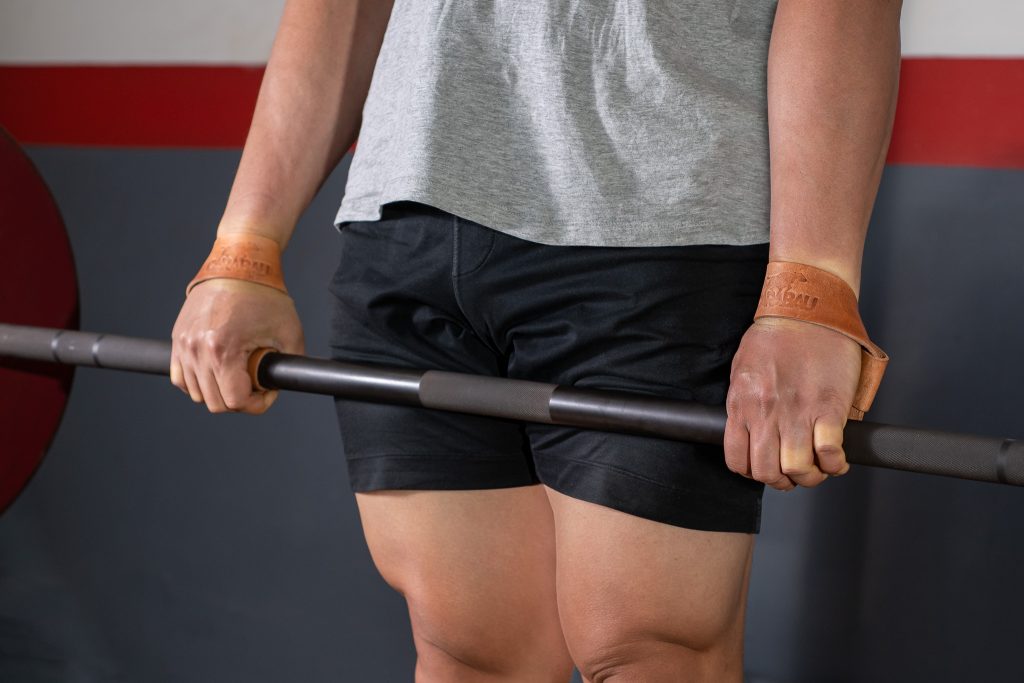
The downside of using straps is that your grip won’t be trained since the load is borne by the straps. So your grip isn’t really being stressed, and your grip won’t get any stronger.
With that being said, straps do have a place in your training even if you’re planning to compete. If you have any hand injuries, are doing heavy rack pulls or higher rep/volume deadlifts, straps can come in handy.
Switch your grip when it starts to fail
To summarise, here are some rules of thumb: Start using chalk early on.
Go as heavy as you can with a double overhand grip so as to train your grip strength. If possible, start your work set with a double overhand grip and switch to a more secure grip when the double overhand starts to fail.
Eventually, you’ll have to switch to the more secure grip of your choice on your last few warmup and worksets.
If you absolutely have to and have no desire to compete or have a hand injury/are doing heavy rack pulls/higher rep deadlifts, use straps.
Don’t let your grip be the limiting factor on your deadlift and switch to a more secure grip when the bar starts to get heavy.

